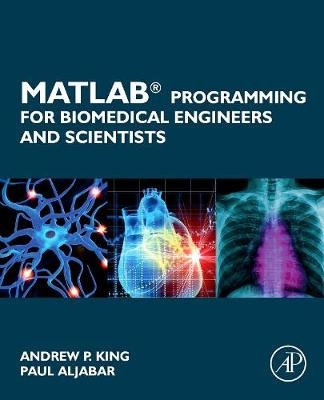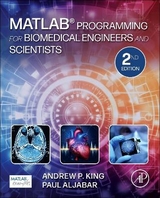
MATLAB Programming for Biomedical Engineers and Scientists
Academic Press Inc (Verlag)
978-0-12-812203-7 (ISBN)
- Titel erscheint in neuer Auflage
- Artikel merken
This book enables the reader to:
Analyze problems and apply structured design methods to produce elegant, efficient and well-structured program designs
Implement a structured program design in MATLAB, making good use of incremental development approaches
Write code that makes good use of MATLAB programming features, including control structures, functions and advanced data types
Write MATLAB code to read in medical data from files and write data to files
Write MATLAB code that is efficient and robust to errors in input data
Write MATLAB code to analyze and visualize medical data, including imaging data
Dr King has over 20 years of experience of teaching computing courses at university level. He is currently a Reader in the Biomedical Engineering department at King's College London. With Paul Aljabar, he designed and developed the Computer Programming module for Biomedical Engineering students upon which this book was based. The module has been running since 2014 and Andrew still co-organises and teaches on it. Between 2001-2005, Andrew worked as an Assistant Professor in the Computer Science department at Mekelle University in Ethiopia, and was responsible for curriculum development, and design and delivery of a number of computing modules. Andrew's research interests focus mainly on the use of machine learning and artificial intelligence techniques to tackle problems in medical imaging, with a special focus on dynamic imaging data, i.e. moving organs (Google Scholar: https://goo.gl/ZZGrGr, group web site: http://kclmmag.org). Paul Aljabar is a mathematician who enjoys using computer programming to address health and biomedical problems. He taught high school mathematics in London for twelve years before taking up a research career. Since then, his work has focused on the analysis of large collections of medical images for a range of applications, for example in order to build anatomical atlases or distinguish normal from pathological physiology. As described above, Paul and Andrew developed this book and learning materials together while teaching Biomedical Engineering undergraduates. Paul has taught on a range of undergraduate and graduate programmes focusing on the analysis and interpretation of medical and biomedical data, carried out through modelling, programming, and the application of methods that are also used in his research (Google Scholar: https://goo.gl/jAgPru).
1. Introduction to Computer Programming and MatLab
2. Control Structures
3. Functions
4. Program Development and Testing
5. Data Types
6. File Input/Output
7. Program Design
8. Visualisation
9. Code Efficiency
10. Images and Image Processing
11. Developing Graphical User Interfaces
| Erscheinungsdatum | 07.07.2017 |
|---|---|
| Verlagsort | San Diego |
| Sprache | englisch |
| Maße | 191 x 235 mm |
| Gewicht | 670 g |
| Themenwelt | Medizin / Pharmazie ► Physiotherapie / Ergotherapie ► Orthopädie |
| Technik ► Medizintechnik | |
| Technik ► Nachrichtentechnik | |
| ISBN-10 | 0-12-812203-X / 012812203X |
| ISBN-13 | 978-0-12-812203-7 / 9780128122037 |
| Zustand | Neuware |
| Informationen gemäß Produktsicherheitsverordnung (GPSR) | |
| Haben Sie eine Frage zum Produkt? |
aus dem Bereich



